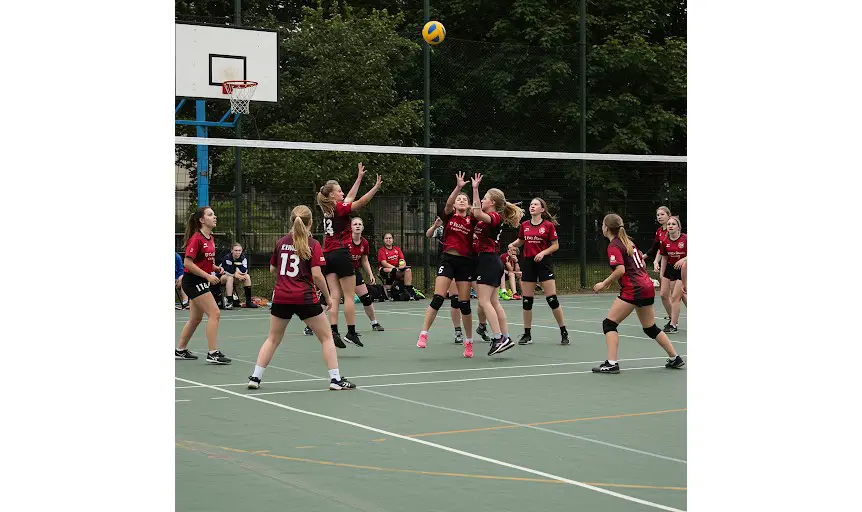The Enduring Legacy and Global Impact of Newcomb Ball

Newcomb Ball is a fascinating sport that blends athleticism, strategy, and teamwork. This unique game holds a special place in physical education programs and competitive leagues alike. Though it shares similarities with volleyball, it has distinct rules and a rich history. As a sport, Newcomb Ball offers an accessible entry point for young athletes while providing depth for more seasoned players. This article explores its origins, global reach, amateur play, professional structure, cultural significance, and detailed rules.
The Origin and History of Newcomb Ball
Newcomb Ball dates back to 1895. It was created by Clara Baer, a physical education instructor at Sophie Newcomb College in New Orleans, Louisiana. Baer designed the game as an inclusive activity for women who were discouraged from playing more strenuous sports.
Initially, it aimed to foster physical fitness and teamwork among female students. The original rules resembled modern volleyball, but with key differences. Players could catch and throw the ball instead of volleying it. This rule made the game more accessible and reduced physical contact.
Clara Baer published the first official rules in 1895, preceding volleyball’s development. Interestingly, some historians believe Newcomb Ball influenced volleyball. Baer’s creation spread quickly across schools and colleges. Its adaptability and inclusive design helped it thrive.
By the early 20th century, Newcomb Ball had reached national recognition in the United States. The game expanded into YMCA programs, girls’ clubs, and summer camps. During World War I, it was used to rehabilitate wounded soldiers. These moments solidified its role as a tool for physical and mental well-being.
The Global Popularity of Newcomb Ball
Although Newcomb Ball originated in the United States, its reach expanded internationally. Educators and coaches recognized its value for teaching teamwork and coordination. The game made its way into schools in Canada, Australia, and the United Kingdom.
In Japan, Newcomb Ball saw adoption in elementary schools due to its non-aggressive nature. Teachers praised its ability to engage students with diverse skill levels. Similarly, South Korea incorporated the game into physical education curricula. It continues to grow in these regions thanks to government-supported sports programs.
In Latin America, Newcomb Ball gained traction in Brazil and Argentina. It was introduced through exchange programs and international teaching initiatives. The sport aligned well with existing school activities that emphasized cooperation and physical development.
Additionally, Newcomb Ball features in some European countries, including Germany and Sweden. These nations value inclusive physical education practices. Consequently, Newcomb Ball found a place in their school systems. Community centers also promote the sport through youth development programs.
Amateur Newcomb Ball: Youth and Schools
Amateur play forms the backbone of Newcomb Ball’s success. Schools around the world integrate it into their PE programs for good reason. The sport teaches critical life skills, such as communication, strategy, and discipline.
Youth leagues are often community-based. Local recreation departments and nonprofit organizations manage these leagues. They provide young players with a structured environment to learn and compete.
Elementary and middle schools prefer Newcomb Ball because of its simplicity. Teachers can quickly explain the rules. Equipment requirements are minimal. These factors make it ideal for budget-conscious institutions.
High schools often host interscholastic tournaments. These competitions allow students to refine their skills in a more formal setting. Coaches emphasize teamwork, resilience, and tactical awareness.
In many areas, after-school programs include Newcomb Ball. These sessions promote physical activity while offering a fun and social experience. Parents appreciate the low injury risk compared to contact sports.
Universities sometimes offer Newcomb Ball as an intramural sport. Students enjoy its nostalgic and social aspects. While not as competitive as varsity sports, intramural leagues sustain interest in the game.
Professional Leagues and Competitive Play
While amateur play dominates, professional Newcomb Ball leagues are beginning to emerge. These leagues seek to elevate the sport’s status and attract broader audiences.
The United States leads in organizing semi-professional Newcomb Ball leagues. The American Newcomb Association (ANA) was established in 2010. It oversees national tournaments and develops coaching standards.
Canada follows closely with its own governing body. Canadian leagues often align their rules with the ANA for consistency. Tournaments in cities like Toronto and Vancouver draw enthusiastic crowds.
In Japan, the Japan Newcomb Federation manages professional and semi-professional matches. Annual championships draw spectators and media coverage. The federation partners with schools to scout young talent.
Australia has taken steps toward formalizing Newcomb Ball competitions. State-level leagues in New South Wales and Victoria are gaining traction. Their model focuses on community engagement and athlete development.
European leagues remain limited but show promise. Sweden and Germany have hosted international friendlies. These events raise awareness and spark interest among athletes and fans.
Global professional play is still developing. However, the sport’s solid amateur foundation offers hope for expansion. Sponsorship deals and media coverage continue to increase each year.
Political and Social Significance of Newcomb Ball
Newcomb Ball holds a unique place in both political and social spheres. As a historically women-centered sport, it symbolizes gender equality in athletics.
Clara Baer’s creation challenged the norms of her time. Women were expected to avoid vigorous physical activity. Newcomb Ball provided an outlet for fitness and competition within societal boundaries.
Over time, the sport became a platform for empowerment. Female athletes found a voice through the game. Coaches and educators used it to promote confidence and leadership among girls.
During wartime, Newcomb Ball served therapeutic purposes. Injured soldiers used the game for rehabilitation. This reinforced its reputation as a sport for healing and inclusivity.
Today, the sport supports diversity initiatives. Schools and organizations use it to bridge cultural and economic gaps. Everyone, regardless of background, can participate and excel.
Socially, Newcomb Ball fosters connection. Its cooperative nature makes it perfect for team-building exercises. Companies and community groups adopt it for retreats and events.
The sport also supports mental health. Players experience improved mood, reduced anxiety, and increased social interaction. These benefits align with modern wellness goals.
The Rules of Newcomb Ball
Understanding the rules is essential for playing and appreciating Newcomb Ball. The game takes place on a court similar to a volleyball court. It is divided by a central net.
Each team consists of six to twelve players. The objective is to throw the ball over the net so that it lands in the opposing team’s court. The opposing team must catch the ball before it hits the ground.
If the receiving team fails to catch the ball, the throwing team earns a point. After a successful catch, the receiving team throws the ball back. Play continues until one team reaches the set point goal, often 15 or 21.
Each match typically consists of three sets. Teams switch sides after each set. Players are not allowed to move with the ball. Once a player catches it, they must stop and throw.
Only one catch and one throw per possession are allowed. Players cannot hold the ball for more than three seconds. These rules keep the game fast-paced and engaging.
Substitutions can occur between points. Coaches often rotate players to keep energy levels high. The sport does not allow spiking or blocking as in volleyball. Instead, success depends on placement and timing.
Fouls include holding the ball too long, crossing the center line, or making physical contact. Officials monitor gameplay to enforce these rules. Most games require one referee and two line judges.
Timeouts are permitted, usually one per set. Teams use them to regroup and strategize. Coaches provide quick feedback and adjust tactics.
Conclusion: A Sport with Purpose and Potential
Newcomb Ball continues to grow and evolve. Its rich history, global popularity, and inclusive design make it a standout sport. From school gyms to professional leagues, it brings people together through shared effort and friendly competition.
As more communities embrace the game, its impact will deepen. Whether for fun, fitness, or personal development, Newcomb Ball remains a valuable part of modern sport. Its journey from a college gym in Louisiana to international courts is a testament to its enduring appeal and future promise.





